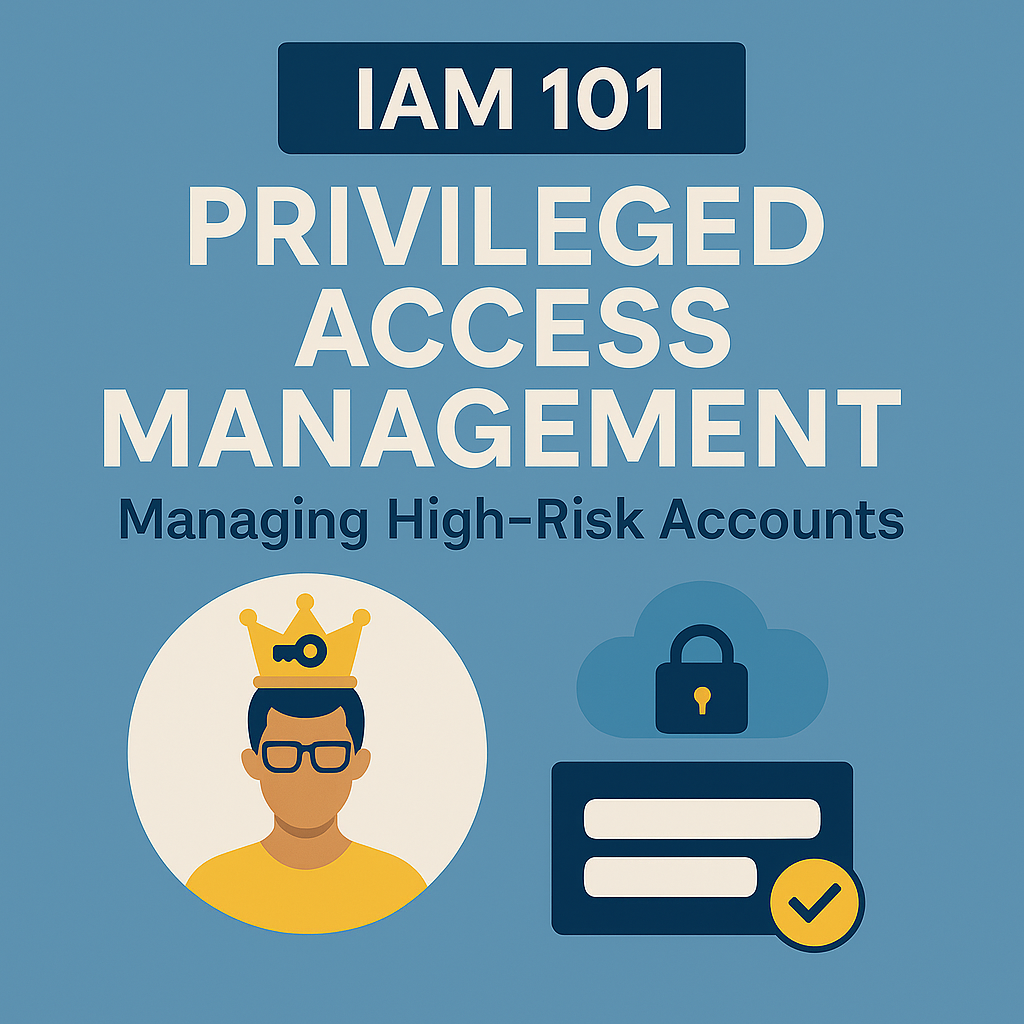
TL;DR
Privileged Access Management (PAM) helps you secure the accounts that matter most—those with elevated permissions and the keys to your most sensitive systems. In 2025, attackers are still targeting admin accounts, service accounts, and infrastructure consoles. This article covers:
- What PAM is and why it matters
- Real-world breaches involving privileged accounts
- Best practices for securing high-risk access
- Tools and controls to implement PAM effectively
🔍 Background
In my early IAM years, I saw developers with full domain admin rights—and no session logging. One database admin had credentials for production, staging, and finance all stored in a spreadsheet.
Fast forward to 2025, and these practices still exist in far too many organizations.
Privileged accounts are the crown jewels. Whether it’s a cloud root user, a domain admin, or a Jenkins automation account, one compromised credential can lead to full environment compromise.
🧠 What Is Privileged Access?
Privileged access refers to any account or credential with elevated permissions—typically beyond those granted to standard users. This includes:
| Type | Example |
|---|---|
| Admin Accounts | Domain Admins, Global Admins in Azure/Okta |
| Service Accounts | Accounts used by applications or scripts |
| Break Glass Accounts | Emergency-use credentials (e.g., offline local admin) |
| Cloud Root Users | AWS root, Azure subscription owners |
| Privileged User Roles | Database admin, firewall operator, DevOps |
⚠️ Real-World Risks and Recent Incidents
🚨 Case: MGM Resorts Ransomware Attack (2023–2024)
The group “Scattered Spider” compromised an Okta Super Admin account through social engineering. With that single point of access, they pivoted into internal systems, encrypted infrastructure, and disabled IT operations across multiple resorts.
A single privileged identity—used without sufficient session auditing or approval gates—cost MGM $100 million in damages and operational loss.
[Source: Wired, Oct 2024]
⚠️ Case: Cloudflare (2023)
Attackers used phished access tokens to bypass MFA and access an internal GitHub repo tied to an Okta support account. While lateral movement was stopped, the breach exposed sensitive internal tooling.
Even companies with mature security programs are vulnerable when privileged session control isn’t enforced.
🧱 Core Components of PAM
Effective PAM programs implement several key pillars:
| Control Type | Function |
|---|---|
| Just-in-Time Access | Grant temporary privileges only when needed |
| Credential Vaulting | Store and rotate passwords securely |
| Session Recording | Monitor and audit privileged activity |
| Approval Workflow | Require request/approval before access is granted |
| Behavioral Alerts | Detect unusual use of elevated rights (e.g., logins at 3am) |
🧰 Best Practices for Implementing PAM
✅ Identify All Privileged Accounts
This includes local admin accounts, cloud tenant roots, database superusers, and embedded service credentials.
✅ Eliminate Standing Access
Use Just-in-Time (JIT) access with tools like CyberArk, BeyondTrust, or Azure Privileged Identity Management (PIM). Grant admin rights for hours, not forever.
✅ Enforce MFA + Strong Authentication
Privileged accounts should always use phishing-resistant MFA (e.g., FIDO2 keys).
✅ Vault and Rotate Secrets
Use a secure vault (HashiCorp Vault, CyberArk, Azure Key Vault) to store and auto-rotate shared or app secrets.
✅ Log Every Session
Record keystrokes or screen activity for all privileged sessions. Tools like Devo, Splunk, or session monitoring modules in PAM platforms help you detect abuse after the fact.
✅ Run Quarterly Access Reviews
Privileged access should never go unreviewed. Automate quarterly recertification with workflows tied to your IGA platform.
🧠 PAM in a Zero Trust World
PAM is a cornerstone of Zero Trust:
- No user is trusted by default.
- Access must be requested, validated, and logged.
- Least privilege and context-aware controls are essential.
With PAM, Zero Trust becomes enforceable—not theoretical.
📚 Cited Study
According to Gartner’s 2024 PAM Market Guide, 75% of cloud security incidents involved misuse or misconfiguration of privileged identities. Organizations implementing vaulting + JIT + session monitoring reduced privilege-related incidents by 60%.
🧭 Final Thoughts
Privileged access is not just an IT problem—it’s a business risk. One compromised credential can sink a company, stall operations, and trigger compliance failures.
PAM is about control, visibility, and governance. Done right, it gives you peace of mind. Done wrong—or ignored—it becomes the easiest path to breach.
If identity is the new perimeter, then PAM is your front gate—with a lock, a camera, and a guard.
🚀 Up Next in the Series:
👉 IAM 101: Identity Governance – Reviews, Certifications, and Audit Readiness